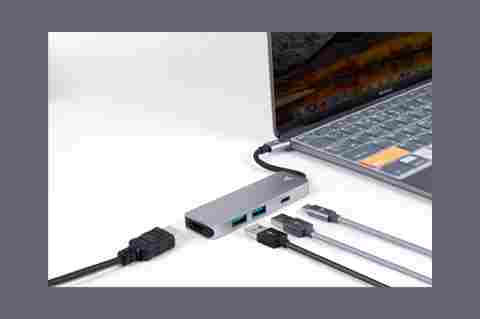Removable media is a term used to describe any digital storage that can be removed from a computing device. This includes USB flash drives, external hard drives, and SD cards. While removable media can be convenient for transferring files between devices or backing up data, it also poses a security risk for organizations. This blog post will discuss the dangers of removable media and how you can keep your organization safe!
The risks of using removable media
One of the biggest dangers of removable media is that it can be used to introduce malware into an organization’s network. Malware is malicious software that can damage or disable computers and spread quickly through a network if not properly contained. Removable media is an attractive target for malware authors because it is easy to infect and challenging to detect. Once a USB drive or SD card is plugged into a computer, the malware can be automatically executed without the user’s knowledge.
Another danger of removable media is that it can be used to steal sensitive data. This is known as data leakage, and it can occur when employees save confidential information on their devices and then take them home with them. Data leakage can also occur when employees copy files to removable media to bypass security controls, such as data loss prevention (DLP) solutions.
Removable media can also pose a risk to organizations due to media failure. This is when the data stored on the device is corrupted or lost. Media failure can occur for various reasons, including physical damage to the device, logical errors, or software bugs. Media failures can be catastrophic for organizations if they result in critical data loss.
Dealing with the Threat of Removable Media
So how can you protect your organization from the dangers of removable media? One way is to disable USB ports on all computers within the network. This will prevent users from being able to plug in any removable media and make it more difficult for malware to spread.
Another way to protect your organization is to implement a data leakage prevention solution to detect and block sensitive data from being copied to removable media.
Employees should also be trained on the dangers of removable media and how to avoid accidentally introducing malware into the network or leaking sensitive data.
Regularly scan all removable media devices for malware before allowing them to connect to any company computers.
Additionally, you should consider encrypting all data stored on removable media. This will make it difficult for unauthorized users to access the data if the device is lost or stolen.
Finally, you should create a backup plan in case of media failure. This way, you can restore any lost data and minimize the impact of a media failure on your organization.
What policies should an organization introduce concerning the use of removable media?
Develop a removable media policy and ensure all employees are aware of it. The policy should state what types of devices are allowed to be used, how data should be stored on them, and how they should be protected.
Enforce data encryption policy on data stored in removable storage devices. This will help protect the data if the device is lost or stolen. Removable media devices should also be password protected to prevent unauthorized access.
Only allow certain types of removable media devices to be used within the organization and block all others.
Taking these precautions can help keep your organization safe from the dangers of removable media!
These are just a few policies that could be implemented to help protect your organization from the dangers of removable media. If you have any questions or want more information, please contact us! We would be happy to help you keep your organization safe.
Read also: Unblocked Hunting Games for Unmatched Excitement
Summary Table
| Aspect | Description |
|---|---|
| Removable Media Risks | Removable media (USB drives, external HDDs, SD cards) can introduce malware, steal sensitive data, and lead to media failure. |
| Malware Introduction | Removable media is susceptible to malware, as it can be automatically executed when plugged into a computer. |
| Data Leakage | Employees might save confidential data on removable media, leading to data leakage, or use it to bypass security controls. |
| Media Failure | Removable media can fail due to physical damage, software bugs, etc., risking critical data loss. |
| Protection Strategies | Disable USB ports, implement data leakage prevention, educate employees, scan for malware, encrypt data, and have backups. |
| Removable Media Policy | Create a policy specifying allowed devices, data storage methods, protection measures, and employee responsibilities. |
| Data Encryption | Enforce data encryption and password protection on removable storage devices to safeguard against unauthorized access. |
| Device Allowance | Permit only specific types of removable media devices within the organization, blocking others for enhanced security. |
